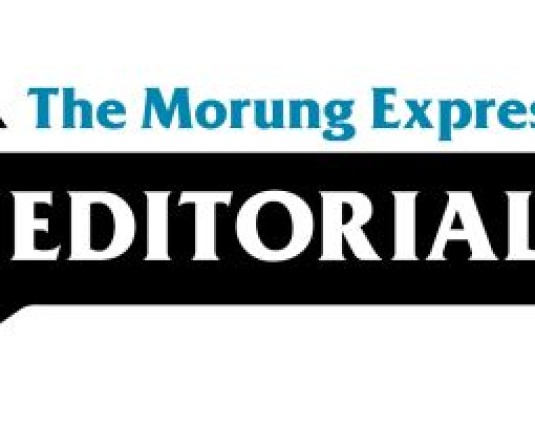Imkong Walling
There was yet another notice, recently, from the Deputy Commissioner, Dimapur, informing of vehicular restriction in between Chathe River Bridge (Patkai Bridge) and Kukidolong from 7:00am of November 1 till 5:00am of November 2.
The motive was to facilitate pacing up of work for the protracted project to widen the Dimapur-Kohima (NH 29) highway into a 4-lane. It advised commuters to take the “alternative route”— 7th Mile-New DC Office-Shokhuvi-Razaphe-Mhaikam-Pimla-Mhainamtsi-Jhornapani/Medziphema and vice versa.
To the people of Nagaland, such orders are, well, routine; and the notice well justified given that the construction of the all-important Dimapur-Kohima highway should continue unhindered.
For the record, it has been more than 5 years since the project, with a time frame of 3 years, was commissioned in 2015.
But for how long the people will be asked to continue to take treacherous proxy roads even as projects keep dragging on with no sign of completion.
The “alternative route” or the go-to road for the government every time there is a landslide on NH 29 is anything but a road in the strictest sense of the term.
It is a dirt track with no connecting bridge and taking it implies crossing a stream that is known to swell with force at the slightest instance of rain. The lives it has claimed over the years should be grounds enough for the government to consider bridging the stream. The road uphill beyond the stream is at best make-shift and narrow.
The other alternative via Niuland-Zadima-Kohima is no different— treacherous.
Still, people are compelled to commute because there is no other option.
Now, it is believed that the Dimapur-Kohima 4-lane, once complete, would bring an end to the existing woes and the district administration would no longer have to take the trouble of issuing public circulars advising “alternative routes.”
On the contrary, there is no guarantee that the 4-lane National Highway will remain open 24x7, 365 days a year. The geology of the hills on which rests the highway is not as stable as it appears and would be prone to rock/mud slips even in the future.
This would imply that commuters would still be compelled to take the two known alternative routes in the event of a blockade of NH 29, which calls for a remedy.
Instead of falling back on advisories, it demands the improvement of the two roads, upgrading them to safer and all-weather conditions, narrow they may be.
The question of money is there but if there is a will and given the long-term benefits, the government must make it a target to bring the two roads to the mainstream and not relegating them to off-road status. The positive effect it would have on the local economy, tied to the two roads, is also another.
The state government boasts of having over 14 thousand-kilometre long network of roads, including the National Highways, but roads are only as good when black-topped.
It must be remembered that economy and many-tarred-roads-linked-together go hand in hand.
And as for the “alternative route” advisories, they are as good as telling amateurs to take a chance at tight-rope walking.
The writer is a Principal Correspondent at The Morung Express. Comments can be sent to imkongwalls@gmail.com






